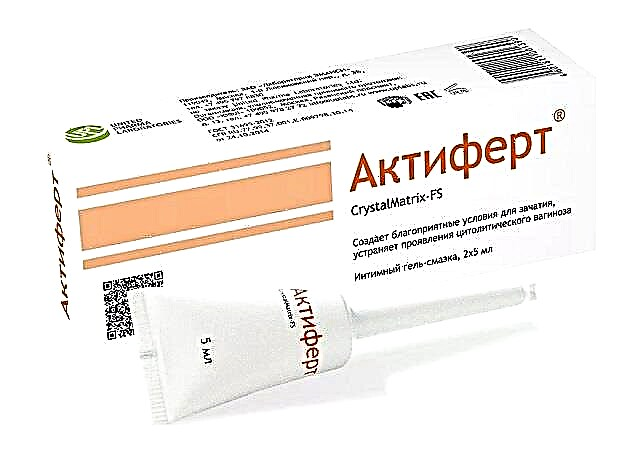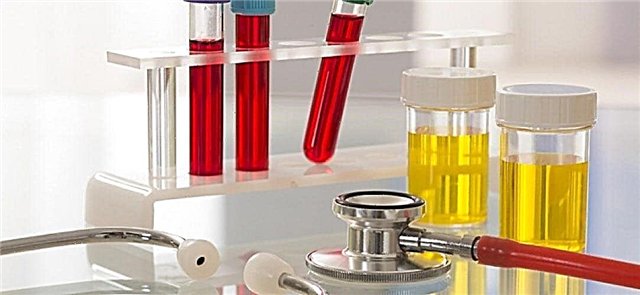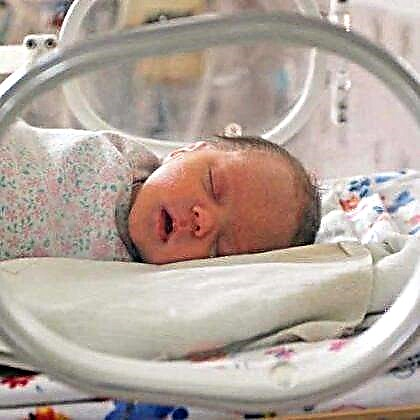Many pediatricians identify purulent otitis media in their patients several times a day. Here we will try to summarize what is known about this disease. Purulent otitis media belongs to the category of common pathologies that can develop independently or arise as a complication of a previous infection. Special attention should be paid to its treatment. Since there are a number of serious complications.
Purulent otitis media is an infectious inflammation that affects the anatomical parts of the middle ear: the mastoid process, the Eustachian (auditory) tube, and the tympanic cavity.
Children tend to suffer from purulent otitis media more often than adults.
Statistics show that nearly five out of six children had at least one case of the disease by the age of three.

Causes
Purulent otitis media in a child is caused by bacteria. To understand how microbes get inside the ear, consider its structure.
The ear helps us to hear and also to maintain balance. Therefore, it is essential in our life. This unique organ includes three sections - the outer, middle and inner ear. All three parts help the child to hear and maintain balance.
When a child listens, the first thing that happens is the movement of sound waves into the outer ear. This is the visible part of the organ of hearing. From the outside, sound waves travel through the ear canal and reach the middle ear, where the eardrum (membrane) and three tiny bones are located. When the waves hit the eardrum, it vibrates, and the bones amplify the vibration, allowing it to reach the inner ear. Here, vibrations are converted into electrical signals and sent to the auditory nerve, which connects the ear to the brain. When electrical signals or nerve impulses reach the brain, it interprets them as sound.
For the middle ear to function normally, there must be the same pressure inside it as the outside. This pressure is maintained by the Eustachian tube, which is a small tube that connects the middle ear to the nasopharynx. The tube allows air to enter the middle ear, so the internal pressure is the same as outside. In addition, the Eustachian tube allows mucus to drain from the middle ear into the throat.
In children, the Eustachian tube is almost horizontal and this sometimes interferes with the movement of mucus from the middle ear to the throat.
With colds and allergies, the tube can become inflamed, as a result of which mucus is blocked from flowing out, it remains in the middle ear. Its accumulation leads to an increase in intra-ear pressure. Germs can migrate from the throat and nose to the middle ear through the Eustachian tube. These pathogens multiply in the mucus, causing purulent otitis media.

Adenoids are another culprit
We all have a pharyngeal tonsil. These are the adenoids. In children, they are quite large and can sometimes block the pharyngeal openings of the Eustachian tubes, preventing mucus from flowing out. A favorable environment is created for the reproduction of bacteria, which leads to purulent inflammation.
Other factors provoking otitis media
The chances of developing purulent otitis media increase when a child is exposed to cigarette smoke, drinks milk from a bottle, or attends kindergarten, since the intimacy among children is more in children's groups, the infection spreads quickly.
Less commonly, purulent otitis media occurs due to a damaged tympanic membrane or mastoid process. This is traumatic otitis media. The rarest way of development of purulent otitis media is hematogenous, when bacteria enter the middle ear through the blood.
The main causative agents of purulent otitis media
There are some specific types of bacteria that are usually responsible for the development of purulent otitis media. These are: Moraxella catarrhalis, Streptococcus pneumoniae, Haemophilus influenzae, Streptococcus pyogenes and Staphylococcus aureus. In fact, these bacteria live in the inside of the ear without causing harm. When they overproduce, for a variety of reasons, it leads to disease.

Forms of purulent otitis media
Acute otitis media
This form develops in diseases of the upper respiratory tract, when pathogens through the auditory tube enter the middle ear.
Stages:
- Catarrhal - the beginning of the inflammatory process. At this stage, the inflammatory exudate accumulates in the ears, there are the first manifestations of the disease - hearing loss, ear pain, fever.
- Purulent. If before this stage there was no treatment with antibiotics and other drugs, the tympanic membrane ruptures, and pus begins to drain from its cavity - the symptoms subside.
- Reconvalescence. The inflammation gradually disappears, the suppuration stops, the hearing is gradually restored.
The disease does not always follow this course. At any stage, acute otitis media can develop into chronic, with indistinct manifestations. If this occurs in the first stage, rupture of the tympanic membrane does not happen, thick, viscous mucus, which is difficult to remove, accumulates in the tympanic cavity.
If perforation does not occur for a long time in the acute form of the disease, the amount of pus increases, as a result of which dizziness, severe pain in the head, vomiting, and high temperature are possible. In this case, from the middle ear, the pathogen can penetrate deeper into the cranial cavity and cause serious life-threatening complications.
If, after the rupture of the tympanic membrane and the outflow of pus, the body temperature rises again and the pain in the ears resumes, this may indicate stagnation of pus in the tympanic cavity or inflammation of the mastoid process. In this case, the discharge of pus lasts 3 to 4 weeks. The acute course of otitis media lasts about 2 to 3 weeks. Inadequate antibiotic therapy and weakening of the immune system are the cause of complications.

Chronic otitis media
A characteristic feature of the pathology is the recurrent nature of purulent discharge. Other manifestations include severe rupture of the tympanic membrane and gradual hearing loss. This form of the disease progresses when the acute form of otitis media is not properly treated. Pathology can also manifest itself as a complication of chronic rhinitis, sinusitis.
Subtypes
Mesotympanitis. The inflammation involves the mucous membrane of the auditory tube and tympanic cavity. The gap is located in the central part of the membrane.
Epitympanitis. In addition to the mucous membrane, the bone tissue becomes inflamed. The gap is located at the top of the membrane.
Symptoms
Purulent otitis media in a child is difficult to confuse with another pathology, since its symptoms are obvious.
The main manifestations of the disease are:
- ear pain;
- hearing loss;
- fever;
- purulent discharge from the ear.

Babies cannot explain that their ears are hurting or they are hearing nothing. The baby becomes irritable, restless, does not sleep, often cries for no apparent reason. There is a way for parents to test their suspicions about otitis media. The outer ear has a cartilaginous protrusion (tragus). When a baby has purulent otitis media, pressure on this cartilage will lead to a significant increase in pain and, accordingly, to screaming or crying.
Diagnostics
It is not difficult to diagnose purulent otitis media. First, the doctor will interview the child for complaints and symptoms and examine the child's ears. At this stage, the specialist can make an approximate diagnosis.
But, in some cases, the following procedures may be required:
- a blood test to determine the degree of inflammation;
- pneumatic otoscopy allows the doctor to check for fluid behind the tympanic membrane; he will use a special medical device called a pneumatic otoscope that gently blows air into the ear; the tympanic membrane is flexible, and when air reaches it, the membrane moves; if there is liquid behind the membrane, it will not move;
- tympanocentesis involves puncturing the tympanic membrane so that exudate can flow out;
- analyzing the contents of the ear to identify the causative agents of the disease - this will allow you to select the right antibiotics for treatment.
Having received all the results, the doctor can diagnose and determine the stage of the disease.
Treatment
Today, antibiotic therapy is a priority in the treatment of purulent otitis media for the following reasons:
- when using antibiotics, the risk of developing complications of otitis media decreases;
- the use of antibacterial drugs improves patient outcomes at an early and late stage of the disease.
Other pharmacological agents are also used in the treatment of purulent otitis media. Pain relievers and antipyretics can relieve the child from pain and reduce fever.
Antihistamines help reduce inflammation of the ear lining. To reduce swelling of the Eustachian tube and restore its function, nasal vasoconstrictor drops can be used.
Systemic steroids have not been shown to be effective in the acute phase.
Antimicrobial therapy must be administered according to the rules.
- The choice of antibiotic.
In the absence of culture results, the choice of an antibiotic should have the following two goals:
- the antibiotic should act on most common bacterial pathogens;
- the drug must be individualized for the child with regard to allergies, tolerance, previous exposure to antibiotics, cost and level of microbial resistance.
- First choice drugs.
Amoxicillin remains the drug of first choice for uncomplicated suppurative otitis media in most cases due to its excellent safety assessment, relative efficacy and low cost. Amoxicillin is the most effective oral antimicrobial available against S. pneumoniae strains. However, amoxicillin may not be effective against some strains of H. influenzae and most strains of M. catarrhalis. This factor is becoming increasingly important with data showing an overall increase in the incidence of H. influenzae as the primary causative agent of suppurative otitis media.
For children who are allergic to penicillins, antibiotics of the cephalosporin class, such as cefdinir, will be the first choice. If the child has a hypersensitivity to cephalosporins, for him azithromycin is a suitable first-line alternative.
- Duration of treatment.
The duration of treatment for purulent otitis media has historically been set at 10 days, and most efficacy studies examining antimicrobial treatment of the disease have used this duration as a reference. But 10 days may be too long for some children, while not long enough for others. Studies comparing shorter durations with longer durations of treatment indicate that short courses of therapy are often insufficient in children under 6 years of age, and especially in children under 2 years of age. As a result, for most episodes, in the vast majority of children, treatment for at least 10 days seems appropriate. Treatment for more than 10 days may be required for very young children, with a severe episode of suppurative otitis media, or if a previous case was problematic.

- Poor response to treatment with first-line drugs.
Healing from purulent otitis media depends on eradicating the causative pathogen and restoring ventilation of the middle ear.
Factors contributing to poor response to treatment with first-line drugs include:
- the ineffectiveness of the selected antibiotic;
- poor adherence to treatment;
- concomitant viral infection;
- persistent dysfunction of the auditory tubes;
- re-infection of the middle ear;
Despite these many potential factors, it is wise to switch to an alternative drug when there is insufficient improvement in the condition of the middle ear.
- Second-line drugs.
When treatment of purulent otitis media with a first-line drug has failed, there are a number of second-line alternatives. These drugs should act on H. influenzae and M. catarrhalis strains, and the most resistant S strains. Only 4 antimicrobial agents meet these requirements: Augmentin (amoxicillin-clavulanate), cefdinir, cefuroxime axetil and ceftriaxone (injection).
Since the high concentration of amoxicillin in the body acts on most strains of S. pneumoniae, and the addition of clavulanate increases the effective antibacterial spectrum of amoxicillin, Augmentin is especially well suited as a second-line drug.
Cefdinir has shown wide treatment efficacy, is generally well tolerated by taste and can be taken once a day.
Ceftriaxone and cefuroxime axetil have important limitations for use in young children. Currently, the suspension of cefuroxime axetil has an unpleasant taste. Ceftriaxone treatment entails pain from the intramuscular injection. However, the use of ceftriaxone is acceptable in severe cases of suppurative otitis media when oral treatment is not possible.
Clarithromycin and azithromycin have only limited activity against resistant S. pneumoniae and H. influenzae strains. Clindamycin effective against many strains of S. pneumoniae, including resistant strains, but not active against H. influenzae or M. Therefore, it should be prescribed for patients who have an infection with penicillin-resistant pneumococci.
The remaining antimicrobial agents that have traditionally been used in the treatment of otitis media have such a significant lack of effectiveness against resistant organisms that their benefits rarely outweigh potential side effects or complications. These include cefprozil, cefaclor, loracarbef, cefixime. Cefpodoxime has shown reasonable efficacy in some studies, but is generally poorly perceived due to its taste.
Conclusion
Purulent otitis media is a common childhood disease. The child may lose hearing, speech problems and developmental delays. This disease does not tolerate frivolity. To preserve the health of the child, you should contact specialists in a timely manner.



